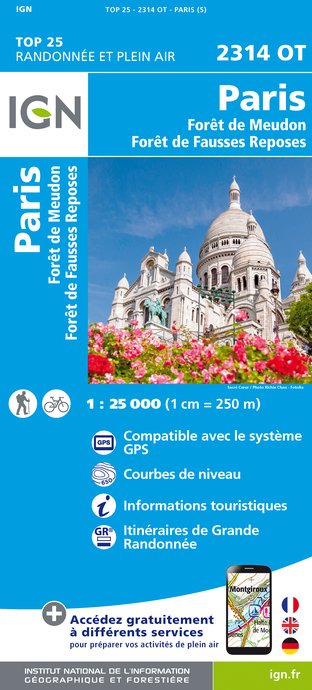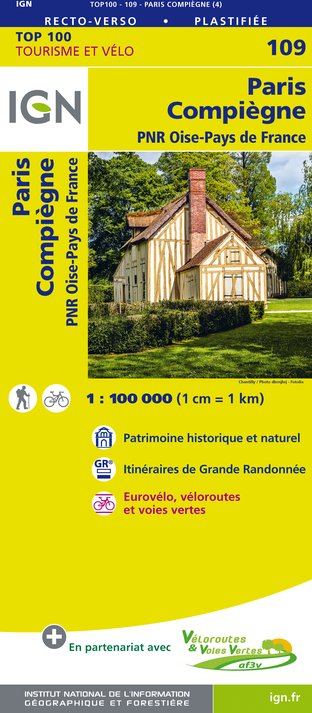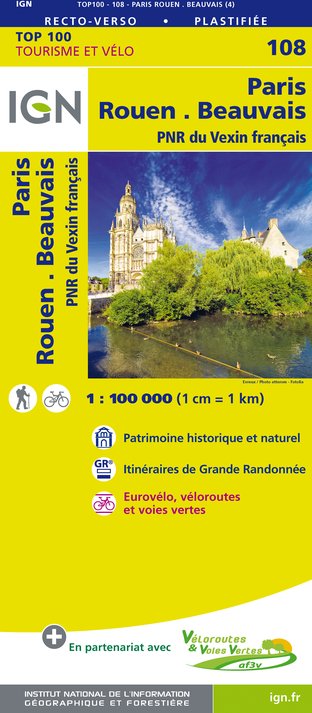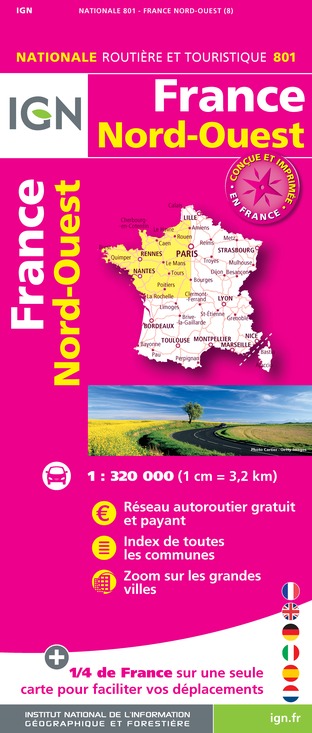Waarschuwing
Waarschuwingen
Type oefening
Boot
Wandel
Zeer eenvoudig
Fiets
Auto
Presentatie
Kaart
Stappen
Punten van interesse
Cirkwi's opdracht
Beoordelingen en recensies
Zie rondom
De standbeelden van de bruggen van Parijs

Credit : Remi Jouan
De Cirkwi brief
Ontdek de historische standbeelden van de bruggen van Parijs: een unieke reis
De Parijse bruggen, versierd met standbeelden die verhalen vertellen over het verleden van de stad, zorgen voor een ongeëvenaarde wandelervaring. Voorgesteld door Balades Fluviales Fabienne Lemoine, biedt deze route niet alleen een wandeling, maar een reis door de tijd, waarbij de artistieke en culturele schatten van Parijs worden onthuld uit de tijd dat bruggenbouw net zoveel ging om schoonheid als om functionaliteit. Bij het betreden van deze schilderachtige route begint men aan een verkenningstocht, waarbij men in contact komt met de ziel van de stad via haar monumentale bewakers. Voel de bries van de Seine en laat de stille figuren je gids zijn bij het ontdekken.
Technisch overzicht van de route
Deze route beslaat in totaal 8,08 kilometer met een hoogteverschil tussen de 27 en 38 meter, waardoor er een interessante mix is van lichte stijgingen en dalingen, wat resulteert in een totale positieve hoogte van 125 meter. Deze route is ontworpen om te wandelen en biedt een boeiende maar fysiek gematigde reis door Parijs, geschikt voor deelnemers van verschillende fitnessniveaus. Met de nadruk op de standbeelden op de Parijse bruggen, leidt de route voorgesteld door Balades Fluviales ontdekkingsreizigers langs historische en architectonische wonderen en presenteert het een fascinerend aspect van stedelijke ornamenten.
Seizoentips voor ontdekkers van brugstandbeelden
Het verkennen van de standbeelden van de bruggen van Parijs is betoverend op elk moment van het jaar, maar elk seizoen heeft zijn eigen nuances. In het voorjaar zorgen bloeiende bloemen voor een pittoresk decor, maar houd ook rekening met incidentele buien; draag altijd een paraplu. De zomers zijn ideaal, maar kunnen druk zijn; ochtendwandelingen hebben de voorkeur. In de herfst krijgt het landschap een gouden tint, perfect voor fotografie, hoewel het avondlicht snel vervaagt; plan dienovereenkomstig. Winters bieden, hoewel fris, een serene ervaring met minder drukte; kleed je warm aan. Wat betreft veiligheid, blijf altijd op de voetpaden en wees voorzichtig op gladde oppervlakken tijdens natte omstandigheden.
Het culturele hart van Frankrijk
Parijs, gelegen in de regio Île-de-France, is niet alleen de hoofdstad van Frankrijk, maar ook een baken van culturele en historische betekenis wereldwijd. De bruggen van de stad, die zowel artistieke als technische wonderen belichamen sinds de 19e eeuw, fungeren als vitale verbinders, niet alleen tussen de oevers van de rivier, maar ook door de tijd heen. Elk standbeeld vertelt een deel van het roemrijke verleden van Parijs, van verhalen over beschermheiligen tot monumentale gebeurtenissen. Het verkennen van deze bruggen stelt je in staat om het hart van de stad te doorkruisen, waarbij je inzicht krijgt in haar evolutie en blijvende charme.
Klimaatinzichten voor bezoekers van Parijs
Parijs: Een mild continentaal klimaat wacht op je. Parijs heeft een gematigd klimaat, gekenmerkt door milde zomers en koele winters. De ideale bezoekmaanden zijn april tot juni en september tot oktober, wanneer de weersomstandigheden het meest gunstig zijn om buiten te verkennen. Verwacht gemiddelde temperaturen tussen 15°C en 25°C in deze periodes, wat zorgt voor een aangename sfeer bij het bezoeken van de brugstandbeelden. De zomers kunnen oplopen tot 30°C, wat mogelijk invloed heeft op buitenactiviteiten midden op de dag. Winters zijn weliswaar kouder, maar zien zelden drastische dalingen onder 0°C, toch is het verstandig om te kleden op wisselende omstandigheden.
De Parijse bruggen, versierd met standbeelden die verhalen vertellen over het verleden van de stad, zorgen voor een ongeëvenaarde wandelervaring. Voorgesteld door Balades Fluviales Fabienne Lemoine, biedt deze route niet alleen een wandeling, maar een reis door de tijd, waarbij de artistieke en culturele schatten van Parijs worden onthuld uit de tijd dat bruggenbouw net zoveel ging om schoonheid als om functionaliteit. Bij het betreden van deze schilderachtige route begint men aan een verkenningstocht, waarbij men in contact komt met de ziel van de stad via haar monumentale bewakers. Voel de bries van de Seine en laat de stille figuren je gids zijn bij het ontdekken.
Technisch overzicht van de route
Deze route beslaat in totaal 8,08 kilometer met een hoogteverschil tussen de 27 en 38 meter, waardoor er een interessante mix is van lichte stijgingen en dalingen, wat resulteert in een totale positieve hoogte van 125 meter. Deze route is ontworpen om te wandelen en biedt een boeiende maar fysiek gematigde reis door Parijs, geschikt voor deelnemers van verschillende fitnessniveaus. Met de nadruk op de standbeelden op de Parijse bruggen, leidt de route voorgesteld door Balades Fluviales ontdekkingsreizigers langs historische en architectonische wonderen en presenteert het een fascinerend aspect van stedelijke ornamenten.
Seizoentips voor ontdekkers van brugstandbeelden
Het verkennen van de standbeelden van de bruggen van Parijs is betoverend op elk moment van het jaar, maar elk seizoen heeft zijn eigen nuances. In het voorjaar zorgen bloeiende bloemen voor een pittoresk decor, maar houd ook rekening met incidentele buien; draag altijd een paraplu. De zomers zijn ideaal, maar kunnen druk zijn; ochtendwandelingen hebben de voorkeur. In de herfst krijgt het landschap een gouden tint, perfect voor fotografie, hoewel het avondlicht snel vervaagt; plan dienovereenkomstig. Winters bieden, hoewel fris, een serene ervaring met minder drukte; kleed je warm aan. Wat betreft veiligheid, blijf altijd op de voetpaden en wees voorzichtig op gladde oppervlakken tijdens natte omstandigheden.
Het culturele hart van Frankrijk
Parijs, gelegen in de regio Île-de-France, is niet alleen de hoofdstad van Frankrijk, maar ook een baken van culturele en historische betekenis wereldwijd. De bruggen van de stad, die zowel artistieke als technische wonderen belichamen sinds de 19e eeuw, fungeren als vitale verbinders, niet alleen tussen de oevers van de rivier, maar ook door de tijd heen. Elk standbeeld vertelt een deel van het roemrijke verleden van Parijs, van verhalen over beschermheiligen tot monumentale gebeurtenissen. Het verkennen van deze bruggen stelt je in staat om het hart van de stad te doorkruisen, waarbij je inzicht krijgt in haar evolutie en blijvende charme.
Klimaatinzichten voor bezoekers van Parijs
Parijs: Een mild continentaal klimaat wacht op je. Parijs heeft een gematigd klimaat, gekenmerkt door milde zomers en koele winters. De ideale bezoekmaanden zijn april tot juni en september tot oktober, wanneer de weersomstandigheden het meest gunstig zijn om buiten te verkennen. Verwacht gemiddelde temperaturen tussen 15°C en 25°C in deze periodes, wat zorgt voor een aangename sfeer bij het bezoeken van de brugstandbeelden. De zomers kunnen oplopen tot 30°C, wat mogelijk invloed heeft op buitenactiviteiten midden op de dag. Winters zijn weliswaar kouder, maar zien zelden drastische dalingen onder 0°C, toch is het verstandig om te kleden op wisselende omstandigheden.
Automatisch gegenereerd.
IGN kaarten

2314OT - PARIS FORÊT DE MEUDON FORÊT DE FAUSSES REPOSES
Uitgever : IGN
Verzameling : TOP 25 ET SÉRIE BLEUE
Ladder : 1:25 000
13.90€

119 PARIS SENS PNR DU GÂTINAIS FRANÇAIS
Uitgever : IGN
Verzameling : TOP 100
Ladder : 1:100 000
8.40€

190 PARIS CHANTILLY FONTAINEBLEAU
Uitgever : IGN
Verzameling : TOP 100
Ladder : 1:100 000
8.40€

118 PARIS CHARTRES PNR DE LA HAUTE VALLÉE DE CHEVREUSE
Uitgever : IGN
Verzameling : TOP 100
Ladder : 1:100 000
8.40€

109 PARIS COMPIÈGNE PNR OISE-PAYS DE FRANCE
Uitgever : IGN
Verzameling : TOP 100
Ladder : 1:100 000
8.40€

108 PARIS ROUEN BEAUVAIS PNR DU VEXIN FRANÇAIS
Uitgever : IGN
Verzameling : TOP 100
Ladder : 1:100 000
8.40€

D75-95 ÎLE-DE-FRANCE OUEST
Uitgever : IGN
Verzameling : CARTES DÉPARTEMENTALES IGN
Ladder : 1:150 000
5.90€

D77 SEINE-ET-MARNE
Uitgever : IGN
Verzameling : CARTES DÉPARTEMENTALES IGN
Ladder : 1:150 000
5.90€

NR08 CENTRE-VAL DE LOIRE
Uitgever : IGN
Verzameling : CARTES RÉGIONALES IGN
Ladder : 1:250 000
6.80€

NR03 ÍLE DE FRANCE
Uitgever : IGN
Verzameling : CARTES RÉGIONALES IGN
Ladder : 1:250 000
6.80€

NR01 HAUTS-DE-FRANCE
Uitgever : IGN
Verzameling : CARTES RÉGIONALES IGN
Ladder : 1:250 000
6.80€

801 FRANCE NORD OUEST
Uitgever : IGN
Verzameling : CARTES NATIONALES IGN
Ladder : 1:320 000
6.10€

EUROPE
Uitgever : IGN
Verzameling : DÉCOUVERTE DES PAYS DU MONDE IGN
Ladder : 1:2 500 000
7.00€
Technische informatie
Boot
Moeilijkheid
Niet gespecificeerd
Afstand
8.1 km
Type oefening
Boot
Wandel
Zeer eenvoudig
Fiets
Auto
Meer informatie tonen
Hoogteprofiel
Startpunt
75004
Paris
Lat : 48.8506677Lng : 2.3555267
Punten van interesse
Gegevensauteur
Beoordelingen en recensies
Om te zien rondom










